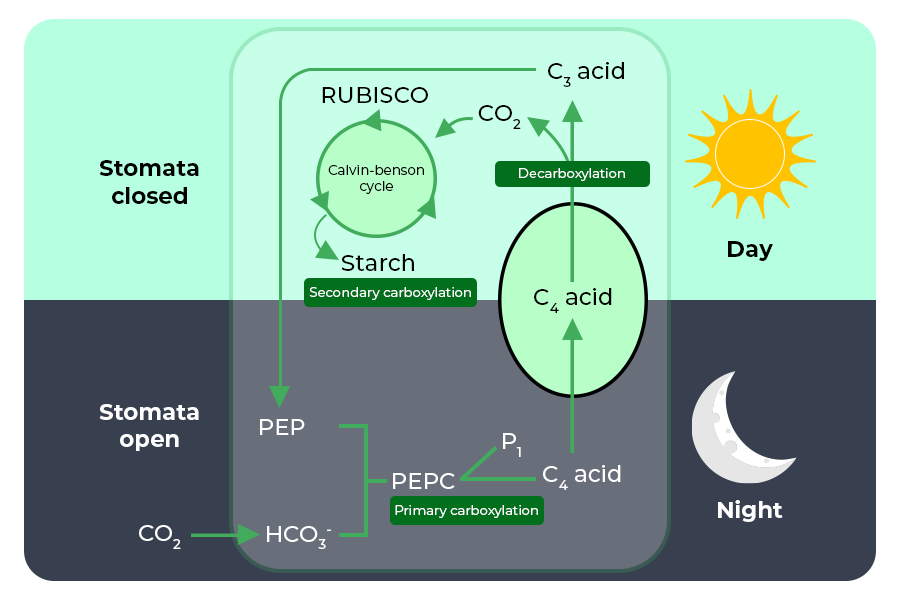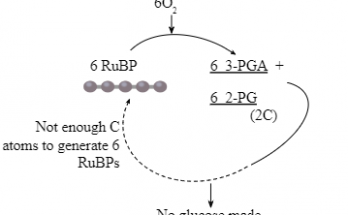Crassulacean Acid Metabolism (CAM) is a specialized form of photosynthesis found in many xerophytic succulent plants. Xerophytic plants are adapted to arid environments and have mechanisms to conserve water. CAM plants have evolved a unique strategy to perform photosynthesis while minimizing water loss.
In CAM plants, such as members of the Crassulaceae family (e.g Bryophyllum, Kalanchoe, and Sedum), as well as plants like Opuntia, Orchids, and pineapple, carbon dioxide (CO2) absorption and fixation occur at different times of the day.
Table of Contents
CAM Pathway (CAM Photosynthesis)
The CAM pathway is a modified form of photosynthesis that occurs in CAM plants. It is specifically adapted to reduce photorespiration and optimize carbon fixation under stress. The pathway involves a series of steps:

During the night
- Carbon dioxide absorption: CAM plants open their stomata, small pores on the surface of leaves, during the cooler and more humid night-time. This allows them to absorb carbon dioxide from the atmosphere.
- Conversion to organic acids: The absorbed carbon dioxide is converted into an organic acid called malic acid. Malic acid is stored in vacuoles within the plant cells.
During the day
- Closing of stomata: CAM plants close their stomata during the hot and dry daytime to reduce water loss through transpiration.
- Malic acid breakdown: In the presence of light, the stored malic acid is broken down into pyruvic acid, releasing carbon dioxide. This process occurs within the specialized cells of CAM plants.
- Carbon dioxide fixation: The released carbon dioxide enters the Calvin cycle, a series of biochemical reactions in the chloroplasts, where it is fixed and converted into carbohydrates (sugars).
The Significance of Crassulacean acid metabolism (CAM)
- Water conservation: By opening their stomata at night and closing them during the day, CAM plants reduce water loss through transpiration. This adaptation allows them to survive in arid environments where water availability is limited.
- Carbon dioxide utilization: CAM plants efficiently utilize carbon dioxide by storing it as organic acids during the night and releasing it during the day for carbohydrate production. This helps them optimize photosynthesis even in conditions of low carbon dioxide availability.
- Adaptation to arid environments: CAM is an evolutionary adaptation that enables succulent plants to carry out photosynthesis while minimizing water loss. These plants have thick, water-storing tissues that allow them to withstand drought and thrive in dry climates.
Crassulacean acid metabolism (CAM) Plants Examples
CAM plants are commonly found in xerophytic environments, characterized by low water availability. However, the CAM pathway is also present in some aquatic plants, such as Hydrilla and Vallisneria. In aquatic plants, the CAM pathway is a response to limited carbon dioxide supply due to slower diffusion in water. Aquatic CAM plants absorb carbon dioxide at night when there is less competition from other photosynthetic plants.
Examples of CAM plants include orchids, cacti, aloe, pineapple, agave, moringa, and certain species of Euphorbia and Bromelioideae.
The CAM pathway is a remarkable adaptation that allows these plants to thrive in arid and challenging environments by efficiently utilizing carbon dioxide, minimizing water loss, and reducing photorespiration.
